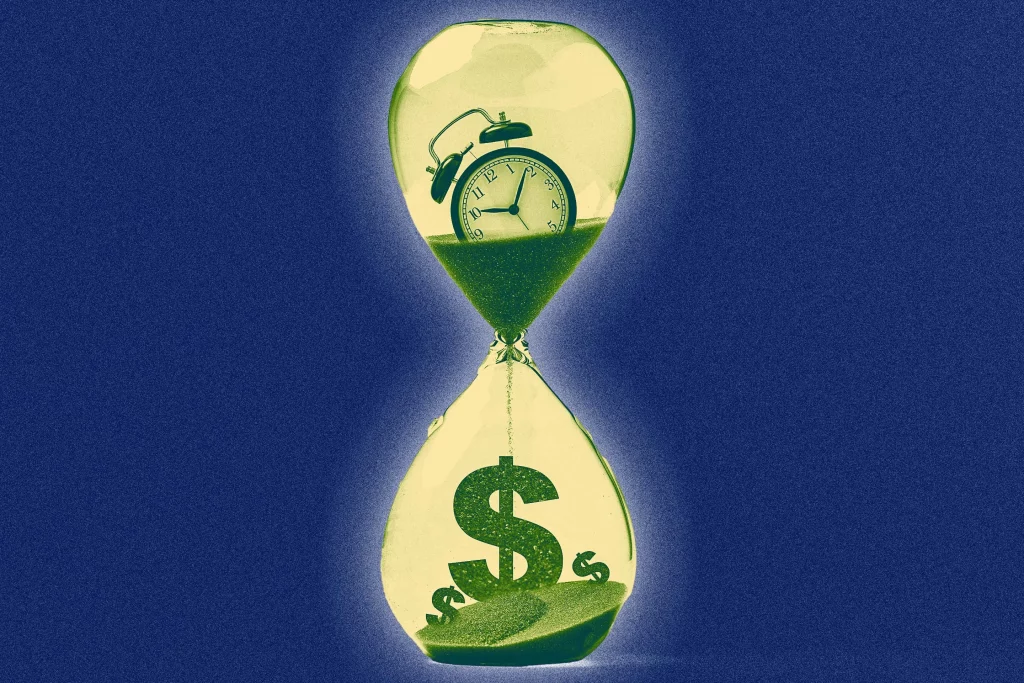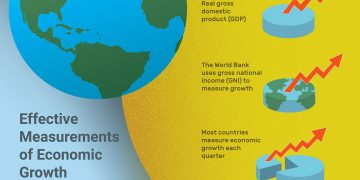In June 2024, Buy-Now-Pay-Later (BNPL) platforms such as Affirm surged in popularity on TikTok, with search interest on the app breaking 11 million queries—an unprecedented spike for financial services on the platform. This sudden surge in social media attention foreshadowed a notable market reaction: shortly afterward, credit spreads on U.S. consumer high-yield bonds widened sharply, climbing to 3.2%, their highest level since early 2023. This correlation raises a pressing question: why did social media buzz around BNPL preemptively signal stress in the consumer bond market?
The core contradiction is clear—while consumers appeared increasingly attracted to BNPL services, potentially signaling robust demand, credit markets interpreted this surge as a warning sign of rising credit risk. Understanding why heightened BNPL popularity on TikTok foreshadowed widening credit spreads in consumer debt reveals crucial insights into market sentiment, liquidity dynamics, and risk assessment. This article will unpack the data behind this phenomenon, examine the cross-market repercussions on consumer finance stocks and banking credit card margins, analyze contrasting expert viewpoints, and outline potential scenarios and strategies for investors navigating the evolving consumer credit landscape in 2025.
Key Data and Background
The Buy-Now-Pay-Later segment in the U.S. consumer finance market has been rapidly expanding since 2020, fueled by shifting consumer preferences toward flexible payment options and fintech innovation. Leading platforms like Affirm, Klarna, and Afterpay became household names, bridging traditional credit products and digital convenience. However, 2024 marked a distinctive inflection point in BNPL awareness and usage.
According to data from TikTok Trends Analytics, BNPL-related search volumes on the platform skyrocketed in June 2024, surpassing 11 million searches for Affirm and similar services—a 45% increase from the previous quarter. This surge coincided with a wave of viral videos showcasing consumers using BNPL to finance discretionary purchases, amplified by influencer endorsements and community discussions around credit behavior. (See Figure 1: TikTok BNPL Search Volume, Q1-Q2 2024.)
Simultaneously, the U.S. high-yield bond market, particularly the consumer sector, experienced a notable widening in credit spreads. The average spread on consumer finance bonds expanded from 2.4% in May 2024 to 3.2% by July, reflecting rising compensation demanded by investors for credit risk. This increase suggests mounting concerns about borrower creditworthiness and potential default risks amid tightening monetary policy and economic uncertainty.
This credit spread widening was particularly pronounced in issuers offering BNPL products or consumer credit lines, with some issuers’ spreads expanding by as much as 80 basis points within two months. Market participants attributed the move to several factors, including rising delinquencies in consumer credit, inflationary pressures affecting disposable income, and the residual impact of Federal Reserve interest rate hikes in late 2023 and early 2024.
Central bank policies play a key role in this dynamic. The Federal Reserve continued a gradual rate-hiking cycle throughout the first half of 2024 to combat persistent inflation hovering near 4%. Higher interest rates increase the cost of borrowing, squeezing consumers’ ability to service debts and pressuring lower-credit-tier borrowers. As a result, the risk premium demanded by bond investors on consumer debt instruments naturally rose, reflected in wider spreads.
Furthermore, emerging behavioral signals from social media platforms like TikTok now increasingly influence market sentiment. Financial analysts and institutional investors track such “alternative data” streams to anticipate shifts in consumer behavior ahead of traditional metrics like retail sales or credit card delinquencies. In this case, the BNPL buzz on TikTok provided a timely barometer of changing credit demand and risk appetite, preceding observable credit market adjustments.
Cross-Market Impact
The ripple effects of the BNPL surge and subsequent credit spread widening extended beyond bond markets, affecting both consumer finance equities and banking sector credit margins.
Pressure on Consumer Finance Stocks
Shares of publicly traded consumer finance companies, including BNPL-focused firms and credit card lenders, felt significant selling pressure in Q2 and Q3 2024. Affirm’s stock price, for example, declined nearly 18% between June and August, correlating with deteriorating bond market sentiment. Market participants expressed concern that rising credit risks might eventually weigh on earnings growth and loan book quality.
The sector’s volatility reflected investors’ reevaluation of growth prospects versus credit risks. Despite robust revenue growth driven by increased BNPL usage, profit margins were expected to compress amid higher loan loss provisions. Investors worried about consumer credit saturation and potential regulatory scrutiny also contributed to the sell-off.
Rebound in Bank Credit Card Margins
Interestingly, the banking sector experienced a countervailing trend: credit card interest rate spreads, or the difference between lending and funding costs, increased modestly through mid-2024. As bond investors demanded higher compensation for credit risk, banks responded by adjusting credit card interest rates upward, improving net interest margins. This helped offset some margin pressure from elevated operational costs and regulatory expenses.
The widening of bank credit card spreads suggested a partial pass-through of rising funding costs to consumers, consistent with a cautious credit environment. However, banks also faced heightened delinquency risks, creating a delicate balance between margin expansion and credit quality deterioration.
Historical Context: Parallels and Differences
The 2024 BNPL and credit spread dynamic invites comparison with the 2013 “taper tantrum,” when Federal Reserve hints of reducing asset purchases triggered a broad selloff in credit and emerging market debt. Both episodes involved a sudden shift in market sentiment driven by monetary policy changes and underlying credit risk reassessments.
However, 2024 differs in several ways. First, the BNPL TikTok surge added a unique social media sentiment layer, providing an early-warning signal absent in 2013. Second, the consumer credit market now faces structural challenges linked to fintech disruption and evolving credit products, contrasting with traditional credit cycles. Finally, inflation remains a more persistent and complex factor today, with its effects unevenly distributed across sectors and borrower profiles.

Contrasting Expert Opinions
The market narrative around the BNPL buzz and consumer bond spread widening reveals a clear divide among analysts, rating agencies, and social media financial commentators.
Standard & Poor’s View: Technical Volatility
S&P Global Ratings issued a report in July 2024 downplaying the significance of the widening consumer bond spreads, labeling them “technical and short-term in nature.” S&P argued that credit fundamentals remained stable, with consumer balance sheets showing resilience despite inflation and interest rate pressures.
The agency emphasized improved underwriting standards in BNPL lending and predicted that any widening in spreads would normalize as liquidity conditions improved. According to S&P, the market reaction reflected temporary repositioning by investors rather than a material deterioration in credit quality.
FinClips: Social Media Sentiment as Leading Indicator
In stark contrast, FinClips—a community of financial analysts active on TikTok and other social platforms—asserted that the surge in BNPL-related social media activity was a leading indicator of consumer credit stress. Their analysis combined sentiment data, search trends, and early payment behavior signals to argue that rising consumer reliance on BNPL products signaled increasing financial strain.
FinClips analysts warned that the credit spread widening was a rational market response to these emerging risks and that investors ignoring social media signals risked underestimating credit deterioration. They recommended closer monitoring of TikTok trends and alternative data as vital complements to traditional credit risk metrics.
Institutional Reports and Contrarian Views
Goldman Sachs and Morgan Stanley research echoed the need for cautious interpretation. Goldman Sachs projected continued pressure on consumer credit spreads amid sticky inflation but noted opportunities in select BNPL issuers with strong underwriting and diversified funding sources.
Morgan Stanley’s quantitative research highlighted the growing influence of social media data on market pricing, urging integration of these signals into credit risk models.
Nobel laureate economist Paul Krugman contributed a contrarian viewpoint, suggesting that while social media buzz captures consumer enthusiasm, it may also inflate perceived risks due to herd behavior and sentiment-driven volatility. He cautioned against overreliance on alternative data without corroborating fundamentals.
Outlook and Strategies for 2025
Looking ahead, several scenarios could shape the trajectory of BNPL adoption, consumer credit spreads, and related market sectors in 2025.
Optimistic Scenario
If inflation moderates toward the Fed’s 2% target and wage growth supports consumer purchasing power, BNPL platforms may sustain growth while default rates stabilize. Credit spreads could gradually tighten as investor confidence returns. Consumer finance stocks might recover, supported by innovation and regulatory clarity, while banks maintain healthy credit card margins.
Neutral Scenario
In this middle ground, inflation remains stubborn but contained. BNPL usage grows modestly but concerns about borrower creditworthiness persist. Credit spreads stay elevated but stable, with episodic volatility tied to macroeconomic data releases. Market participants balance growth and risk cautiously.
Pessimistic Scenario
Persistent inflation, rising unemployment, or regulatory clampdowns trigger higher BNPL defaults and broader consumer credit stress. Credit spreads widen sharply, consumer finance stocks suffer steep declines, and bank credit card margins compress due to rising delinquencies. Market volatility spikes, forcing a reassessment of consumer credit risk premia.
Practical Recommendations
Investors should monitor three key indicators:
- Social Media Sentiment and Search Trends — Track BNPL-related buzz on TikTok and other platforms as early warning signals.
- Credit Spread Movements — Watch consumer bond spreads, especially for issuers with significant BNPL exposure.
- Consumer Credit Quality Metrics — Analyze delinquency rates, loan loss provisions, and funding cost trends for consumer finance firms and banks.
Diversification across consumer credit sub-sectors and hedging interest rate and credit risk exposures remain prudent. Moreover, staying alert to regulatory
developments and fintech innovations will help identify emerging risks and opportunities.
Conclusion
The surprising correlation between the 2024 TikTok-driven Buy-Now-Pay-Later surge and subsequent widening of consumer bond credit spreads underscores the evolving interplay between social media sentiment and financial markets. While traditional credit metrics and rating agencies offer one lens, alternative data and social analytics provide early insights into shifting consumer behavior and credit risk. This convergence challenges investors to broaden their analytical frameworks in an increasingly digital and interconnected financial ecosystem.
As the consumer credit landscape continues to evolve, a vital question remains: Will social media-driven sentiment increasingly dictate market pricing, or will fundamental credit factors ultimately reassert dominance? The answer will shape investment strategies and risk management approaches in the years ahead.



































